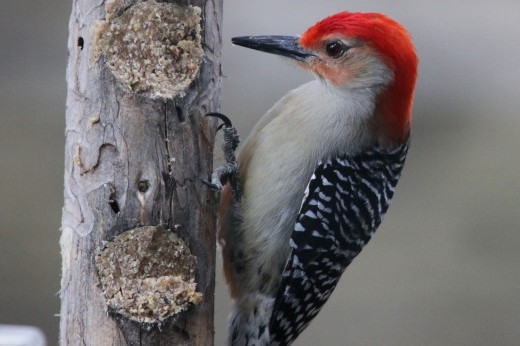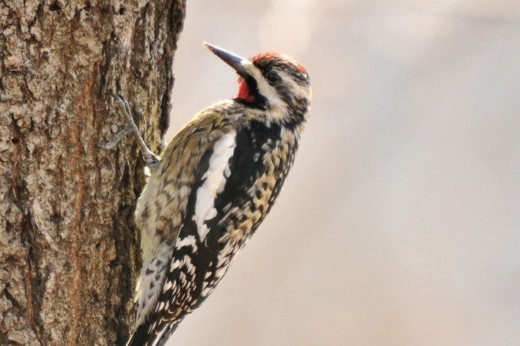About 200 bird species are found each year in the Garden, but the great majority are "just passing through." Yet even on the coldest winter day there are hearty species that survive and even thrive here. On a walk that I led here last weekend we spotted 22 species in a single hour. And we used the opportunity of a below-freezing day to observe some of their winter feeding strategies.
This cold January, some species, including many ducks and herons, have simply flown away in search of food. They can't gain access to plants and aquatic animals beneath a thick layer of ice and snow. The frozen ground makes worms an impractical food source, but last year's seeds and berries were still on some trees and shrubs, providing much-needed nourishment for American robins and their close relative, the hermit thrush. And of course woodpeckers are able to gather protein in the form of dormant insects beneath the bark of trees. We saw four species of that charismatic family on our walk—a woodpecker superfecta! The little downy woodpecker, the noisy red-bellied woodpecker, the northern flicker, and the yellow-bellied sapsucker all made appearances.
Sapsuckers have a unique feeding strategy that helps them overwinter here at the Northern limit of their winter range. They skillfully drill rows of sap wells into the bark of trees, and carefully tend them to keep the sap flowing and keep competing birds, and even squirrels, away from their sweet food source. Old wells are easily visible in trees around the Garden and testify to the bird's presence over many years, as well as to the trees’ resilience. You may not think that sap would be flowing on a sub-freezing winter day, but the conifer in the photo above produced enough to keep at least one bird alive throughout a chilly day, and the truly frigid night to come.



